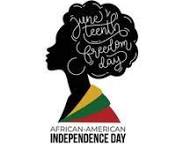Are our public schools removing holiday celebrations and decorations from their classrooms? Most holidays are of religious background. Does this violate the Constitutional principal of separating Church and State? Do the celebrations alienate certain students and demonstrate a lack of respect for diversity?
Several district courts have ruled that under certain circumstances public schools can display holiday symbols such as Christmas trees, Menorahs, and the Star and Crescent by not nativity scenes or excerpts from the Bible, Torah, or Qur’an. This celebration also permits singing religious Christmas carols (Doe v. Duncanville Independent School District, 70 F.3d 402 5th Cir. 1995).
In addition, studies of the biblical origins of Christmas and Easter are an appropriate part of history, civilization, ethics, or comparative religion. In other words, Biblical passages that relate to Christmas, with the purpose of study, are appropriate in public schools under the ruling of Stove v Graham 449 U.S. 39, 42 (1980).
Is Christmas still viewed as a religious holiday or is it view only of a time for giving, receiving, and spending time with family and friends? The fact is Christmas is fun with lights, gifts, Elf on the Shelf, and a jolly man named Santa. And, according to a Rasmussen report on December 11, 2013, a poll of 1000 adults indicate that 75% think Christmas should be celebrated in public schools with 25% disagreeing or not sure. For the full report see www.rasmussenreports.com.
Holiday Beliefs Considered
Exclusions exist from an occasional family or student. As schools or classrooms focus on specific discussions, a balance between religious freedom and interest must meet a balance to have a well-rounded education. Closing schools for a Christian holiday such as Good Friday and two Jewish holidays, Yom Kippur and Rosh Hashanah seem to be an acceptable practice. Are schools showing preference to certain religions by creating built in days off and are we inadvertently disrespecting other religions? Isn’t the intent of the First Amendment to prevent this disrespect?
December is the month of conflict with its holiday celebrations. Remember, not everyone shares the beliefs of the majority. But, everyone has the same right to either believe or not. Therefore, we should teach about various religious beliefs and practices. But, the question of the right to celebrate or practice one over the other is challenging. Before a plan of activities in the classroom consider:
• Make the purpose to the activity educational.
• Form the activity to fit within the curriculum.
• Do not offend any student.
In teaching content to the secular, an appropriate course of action needs taken.



